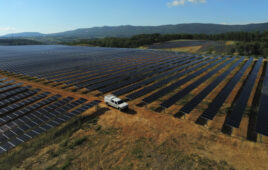The Inflation Reduction Act includes a provision allowing tax-exempt entities to receive the solar investment tax credit as a direct payment. In the past, to make nonprofit solar projects financially viable, most organizations had to partner with developers or banks that could take advantage of the tax benefits. Organizations would sign power purchase agreements (PPAs) where they would pay the bank or developer a set amount of money for the solar energy over a length of time, usually 25 years.
Now, tax-exempt organizations like public schools, cities and nonprofits can get those credits by direct pay, and receive a check for 30% of the project cost just like a tax-paying entity would receive the credit when filing taxes. Direct pay paves the way for organizations to own solar projects instead of just buying the power through PPAs.
Although the industry is awaiting official guidance from the Treasury Department regarding the logistics of direct pay and other IRA provisions, the basic qualifying factors are spelled out in the statute. Here are the entities that can access direct pay for the solar ITC.
1. Tax-exempt organizations
Any organization that has filed an application with the federal government for tax-exempt status will qualify for direct pay, according to Amit Kalra, partner at Sheppard Mullin. This could include state colleges and universities, nonprofit organizations and more. It likely does not include homeowners’ associations (HOAs), which typically file a corporate income tax return, Kalra said.
2. State, local and tribal governments
Any governmental entities can receive direct pay for the solar ITC. This includes an already-hot market segment — public schools. A 2020 report by Generation180 found 7,332 schools nationwide use solar power, a number that’s surely grown since then.
3. Rural electric cooperatives
Rural electric co-ops have been leaders in solar adoption because of their member-centric structure. Co-ops now qualify for direct pay, allowing them to own their solar projects and receive credits directly.
4. The TVA
The Tennessee Valley Authority is a federally owned electric utility corporation that can now receive direct pay for solar projects.
How will direct pay change nonprofit solar project financing?
To take advantage of direct pay, tax-exempt entities will likely get a bridge loan from a solar installer or bank, pay the government incentive amount back to the loan company once they receive it, then pay the rest on an installment plan, Kalra said.
“The same parties that are currently willing to underwrite PPAs and take the credit exposure to a tax-exempt [entity], I don’t see why they wouldn’t be willing to underwrite a construction loan to a tax-exempt [entity], or a term loan for that matter, and say, ‘Here’s your $100. You go install this facility and then you pay us back,'” he said.
Fellow Sheppard Mullin partner Benjamin Huffman said financiers previously set up a similar payment structure for cash grants for solar installations.
“It was essentially borrowing against that future government payment, which could be structured for this program just as easily,” Huffman said.
The ability for nonprofits to own solar projects could make energy savings and sustainability an option for more organizations than ever before.
“Having these entities be able to access the systems directly and own the systems if that’s what they choose is a huge step forward for energy sovereignty,” said Andie Wyatt, policy director and legal counsel at GRID Alternatives.




AimWhat form do you use to claim the direct pay?
We are a church
Can nonprofit qualify for the direct pay tax credit if they lease the property on which they pay to have a solar system installed?
Any update on Treasury regulations to further clarify the procedure for these rebates?
Nothing yet
Hello, I was wondering if there now is any update on this, has the IRS provided guidance on how tax exempt entities can get direct payments?
The big question we have as a nonprofit school is eligibility for the credit if the solar panels project started in July 2021 with the panels going live in January 2023.
Good info a question we are a HOA registered in nj as a not for profit organ. Does this make a difference
This is very informative and need to get out into the community
What does the situation look like if a non-for-profit and a for—profit have a partnership in form of a LLC who owns and operates a PV project? Can the non-profit partner claim direct pay and the for-profit partner ITC’s?
Would luv to know more about options for municipalities to finance solar and/or storage projects: do a muni bond offering? The IRA Green Banks?
Question……..I know that this program is still being drafted and the details are yet to come but what are your thoughts regarding “when”? I am seeing several things that point to 12-31-2022 and 1-1-2023 for a program start date. Do you think that projects that start in 4th quarter of 2022 and maybe finish in 2023 will be able to apply for this?